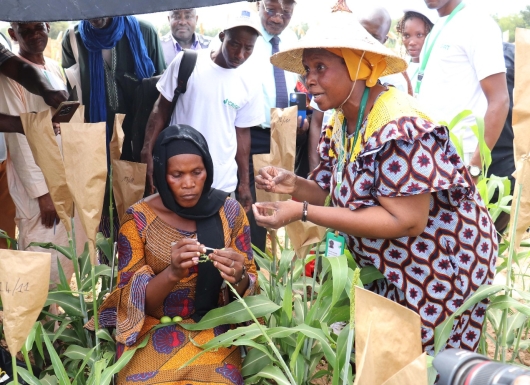Submitter: (ICRISAT)
Protected cultivation is the cultivation of the crops in specialized structures where temperature, humidity, light, etc. are managed depending upon the crop requirement. High value vegetables can be a good option for the farmers under protected cultivation as it offers several advantages like better growth, higher yields and effective pest and disease management.

The technology is ideal for regions vulnerable to climate change and those transitioning toward sustainable, high-value horticulture. It can be effectively adapted to diverse agro-climatic zones across India, from arid and semi-arid regions to high-rainfall areas, when localized appropriately.
Expansion Potential:
India: Across India.
Global: Sub-Saharan Africa and Southeast Asia for climate-resilient horticulture.
Protected cultivation is highly scalable with increasing climate variability. Structures such as naturally ventilated polyhouses and shade nets can be customized in size and material depending on local climate, landholding size, and farmer investment capacity. Its proven success in diverse agro-climatic zones across India-from arid areas to humid regions demonstrates its broad applicability. The availability of government subsidies under schemes like MIDH, NHM, and RKVY makes the initial investment feasible for small and marginal farmers. Moreover, the technology aligns well with India’s push for climate-resilient agriculture and high-value horticulture. With its ability to produce more with fewer resources and reduce climate vulnerability, protected cultivation presents a sustainable and scalable option for transforming India’s vegetable production systems.
Rohan Khopade: rohan.khopade@icrisat.org
Gajanan Sawargaonkar: gajanan.sawargaonkar@icrisat.org
Ramesh Singh: ramesh.singh @icrisat.org